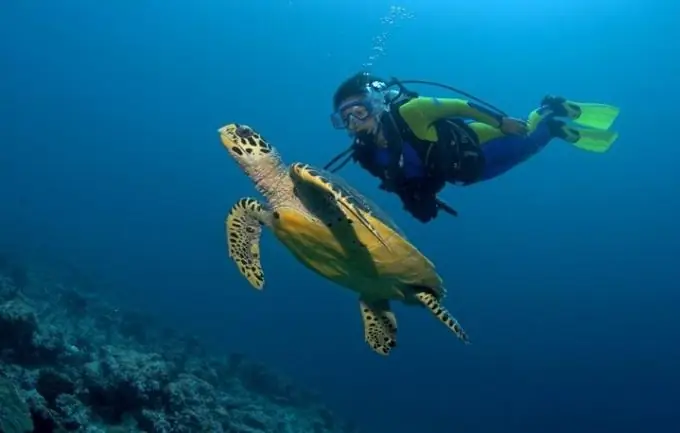- Author Antonio Harrison [email protected].
- Public 2023-12-16 07:44.
- Last modified 2025-01-22 21:44.
Universal exhibitions EXPO are world events comparable in importance to world economic forums. They have been held since 1851, when the first World Industrial Exhibition took place in London. EXPO is visited by millions of tourists from different parts of the world, so each participating country seeks to demonstrate its originality, high level of development and the latest scientific achievements.

The EXPO 2012 exhibition opened in the South Korean city of Yeosu on May 12 and will run until August 12. About 250 thousand square meters were allocated for the exposition of more than 100 countries and organizations. The theme of this exhibition, which bears the name "Living Ocean and Coast", is the protection of the sea and its natural resources, the careful use of the world's oceans and coastal zones, and oceanic discoveries.
The exposition of Russia at EXPO-2012 is dedicated to the cradle of all life on Earth - the ocean and its mysteries, legends, myths and fairy tales that excite the minds of people. The logo of the Russian exposition is made in the form of a water cube - a small piece of the ocean. It aims to draw people's attention to the ecological problems of the ocean and highlight the value of the planet's water resources. In addition, the cube also expresses one of the main ideas of the exhibition - the ocean unites all people and they must take care of it.
The polar bear cub was chosen as the symbol of the Russian exposition, which is revered in the culture of the northern peoples as a symbol of purity of thoughts. The sweet smile of this mascot does not leave indifferent the guests of the Russian pavilion.
The motto of Russia at EXPO-2012: "Ocean and man - the path from the past to the future." The concept of "path" in South Korea has a philosophical and ethical meaning and means a system of cultural and moral norms according to which a person and the whole society develop. Identifying this “path”, the Russian exposition is conditionally divided into three zones: cognition, use and preservation, and cultural heritage. These zones reflect progress in the interaction of people and the oceans: from discovery to study, from study to use, from use to conservation.
In the knowledge zone, the guests of the exposition will learn about Russia, the history of ocean exploration and the development of the Northern Sea Route, the great Russian travelers and navigators, the Mir deep-sea manned vehicles, remote sensing of the ocean and its role in the life and economy of Russia.
In the second zone, tourists are told about the exploration and development of ocean resources, monitoring of the ecological situation, which is carried out from space, forecasting hazardous natural phenomena, alternative and nuclear energy, the latest equipment and equipment for working under water.
Guests are told and shown about the harmonious interaction of the ocean and humans, the development of nature reserves with protected water areas in Russia, the culture of coastal peoples, sea sports, recreation and much more in the third zone of the Russian exposition of EXPO-2012.
Thanks to the latest projection shows, viewers of the Russian exposition can plunge into the depths of the most incredible and impressive video and sound images, perceived as the most incredible attraction. Due to the effect of presence, guests have the opportunity to "visit" Vladivostok, at the polar base, in the waters of the Arctic, etc. In the "Digital Library" guests get acquainted with holographic intelligent systems that "communicate" with readers at a new level. Each visitor can try a cube-shaped travel guide, which does not need to be flipped, but rotated in cyberspace and find all the information of interest.
In addition to the impressive Russian exposition, EXPO guests have the opportunity to see many concerts, performances, laser and light shows, and fireworks every day. And it is not for nothing that the well-known guidebook "Lonely Planet" recommends a trip to the EXPO among those journeys that "must be made in 2012".






